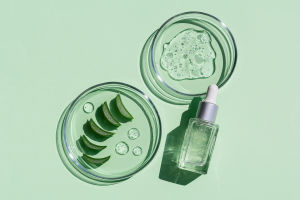Glue sticks may seem like a simple, everyday tool, but they are one of the most essential items for arts, crafts, and everyday tasks.
Whether for school projects, office work, or quick home repairs, glue sticks offer a mess-free, easy-to-use solution that has been embraced for decades.
For Lykkers looking for more insight into this versatile tool, here’s a comprehensive guide to everything you need to know about glue sticks, from how they’re made to their many uses.
The History of the Glue Stick
The glue stick was first introduced to the world in 1969 by the German company Henkel. Inspired by the convenience of lipstick applicators, Henkel developed a glue product that could be applied smoothly without the mess commonly associated with liquid glue. This innovation changed the way people approached everyday tasks, making adhesives more portable, cleaner, and simpler to use.
Since then, glue sticks have evolved in their formulation and use. Today, they are an indispensable tool found in classrooms, offices, and homes worldwide, helping people complete tasks with ease and precision.
How Are Glue Sticks Made?
Glue sticks are typically made from a combination of polymer, water, and glycerin. The main adhesive component is a thermoplastic polymer that softens when heated and hardens upon cooling. This allows the glue to remain solid in stick form but melt easily under pressure as it is applied.
Once the formula is prepared, it is poured into cylindrical molds, cooled, and then packaged in the familiar twist-up tubes that make application so simple. Some glue sticks may also contain added ingredients for specific purposes, like washable formulas for children or extra-strong versions for more demanding tasks.
Uses and Versatility
Glue sticks are celebrated for their versatility and ease of use, making them the perfect tool for a wide range of tasks:
School Projects: Glue sticks are a favorite among students and teachers alike due to their non-toxic and washable nature. They are ideal for arts and crafts, paper projects, and simple tasks like gluing photographs and paper cutouts.
Office Use: In offices, glue sticks are indispensable for sticking papers, envelopes, and posters. Their clean application makes them the go-to adhesive for paperwork.
Crafts and DIY: For Lykkers who love to get creative, glue sticks offer the precision and control needed for intricate projects like scrapbooking, card-making, and DIY home décor.
Home Repairs: While not suited for heavy-duty repairs, glue sticks can be a quick fix for lightweight repairs around the home, such as sealing envelopes or sticking light paper materials.
How to Choose the Right Glue Stick
When choosing a glue stick, it’s important to consider the specific use. Here are some factors to keep in mind:
Washable vs. Permanent: Washable glue sticks are ideal for children’s projects, allowing easy cleanup if mistakes are made. Permanent glue sticks, on the other hand, offer a stronger hold for long-lasting tasks.
Acid-Free Glue: For scrapbooking and other projects involving photos or important documents, acid-free glue sticks are a must. They prevent the glue from yellowing over time and won’t damage the paper.
Size: Glue sticks come in various sizes. Small, travel-friendly sticks are great for on-the-go tasks, while larger sticks are more economical for frequent use.
Price and Availability
Glue sticks are widely available and are one of the most affordable adhesives on the market. The price can vary depending on the brand, size, and type of glue stick.
Standard glue sticks: Usually range from $1 to $3 for a single stick, and multipacks can often be found for $5 to $10.
Specialty glue sticks: These include acid-free, permanent, or extra-large versions and can cost a bit more, typically around $4 to $7 for a single stick.
You can find glue sticks at any office supply store, craft shop, or supermarket. Many brands also sell eco-friendly glue sticks that use sustainable materials and packaging, which is a great option for environmentally conscious Lykkers.
Fun Facts About Glue Sticks
Inspired by lipstick: The glue stick’s twist-up design was inspired by the convenience of lipstick, offering users a mess-free adhesive solution.
Non-toxic and safe: Most glue sticks are designed to be non-toxic and safe for children to use. This makes them a popular choice for schools and family-friendly activities.
Not just for paper: While glue sticks are most commonly used for paper, they can also adhere to light materials like cardboard, fabric, and thin plastic.
Final Thoughts: A Must-Have Tool for All
Glue sticks are an essential tool in our daily lives, offering a convenient and mess-free adhesive for various tasks. From school projects and office work to DIY crafts and quick fixes, glue sticks provide the versatility and ease of use needed for almost any job. Whether choosing a washable formula for kids or an acid-free version for photo preservation, there’s a glue stick for every need. So, Lykkers, the next time you reach for a glue stick, remember that this simple tool has a rich history and continues to make everyday tasks easier.


